ARTIST SPOTLIGHT 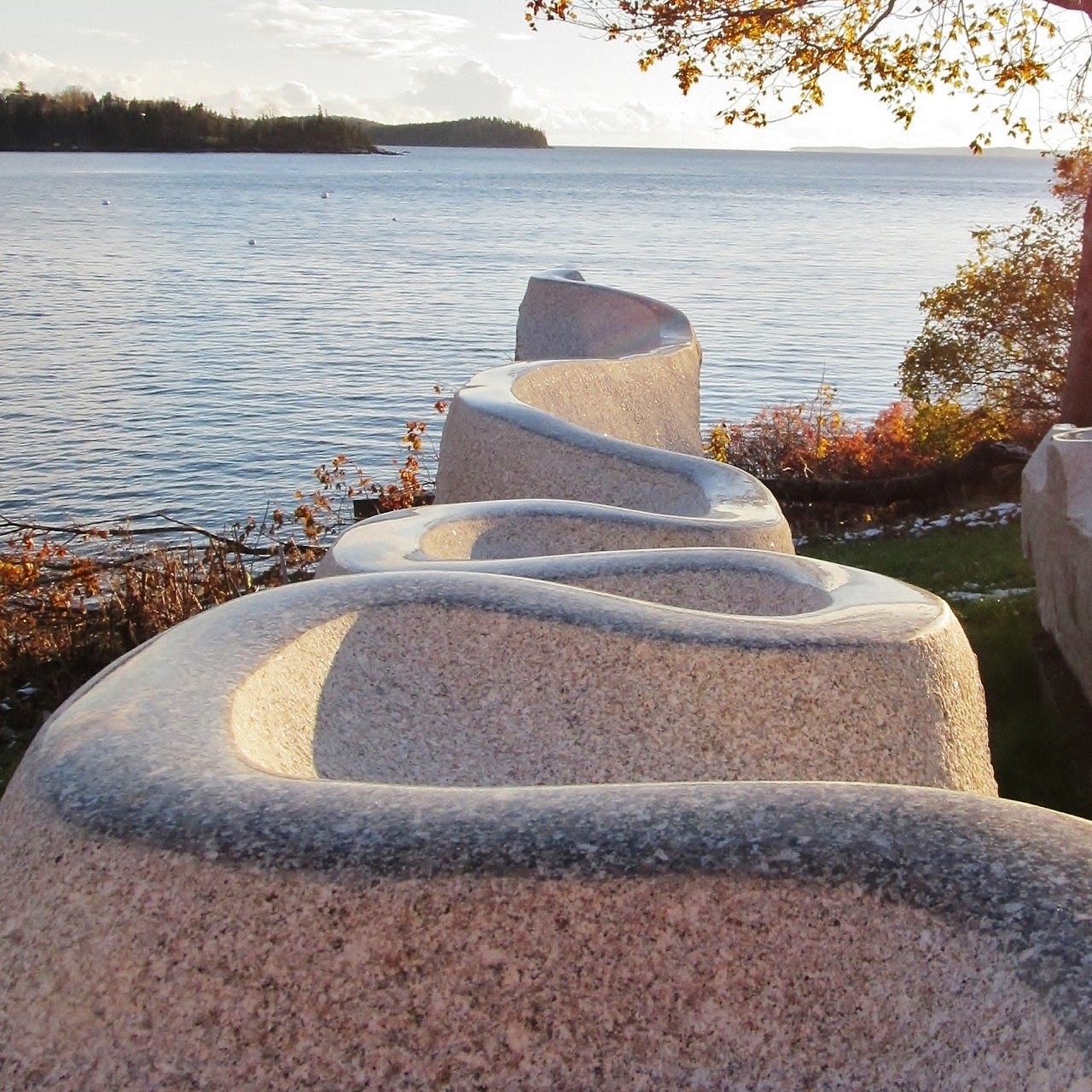

By Bob Leverich
Who are you and how has art come to fit into your life?
I grew up on a dairy farm in western Wisconsin not far from the Mississippi, in an era when rural kids had the whole world to range over – pastures and fields, orchards and woods, hills and streams, in all seasons. There was always work to do on the farm, but it afforded a closeness to the natural world that still informs who I am and how I think about much of my work. I count myself lucky for that.
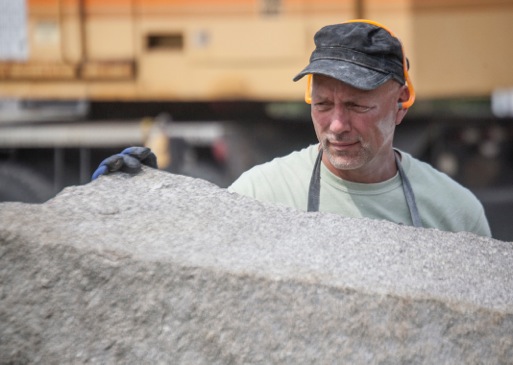 As a kid, drawing and making things were my ways to work out my understanding of myself and the world. I was interested in lots of things – plants, rocks, people, seashells, ships, buildings – and I drew them all. I made little sculptures from materials I found around the farm – clay from the creek, sheet metal scraps, wood, even the red wax from cheeses! Drawing and making turned out to be what I do and who I am. I became an architect, and a potter, and a woodworker, and a sculptor. When I draw or make something, I feel profoundly present in the world. It’s also what I have to give. Today I teach visual arts at The Evergreen State College in Olympia, Washington. I find students are eager to visualize and make things to make the world a better, more livable place, and I try to make sure they do it well and are valued for it.
As a kid, drawing and making things were my ways to work out my understanding of myself and the world. I was interested in lots of things – plants, rocks, people, seashells, ships, buildings – and I drew them all. I made little sculptures from materials I found around the farm – clay from the creek, sheet metal scraps, wood, even the red wax from cheeses! Drawing and making turned out to be what I do and who I am. I became an architect, and a potter, and a woodworker, and a sculptor. When I draw or make something, I feel profoundly present in the world. It’s also what I have to give. Today I teach visual arts at The Evergreen State College in Olympia, Washington. I find students are eager to visualize and make things to make the world a better, more livable place, and I try to make sure they do it well and are valued for it.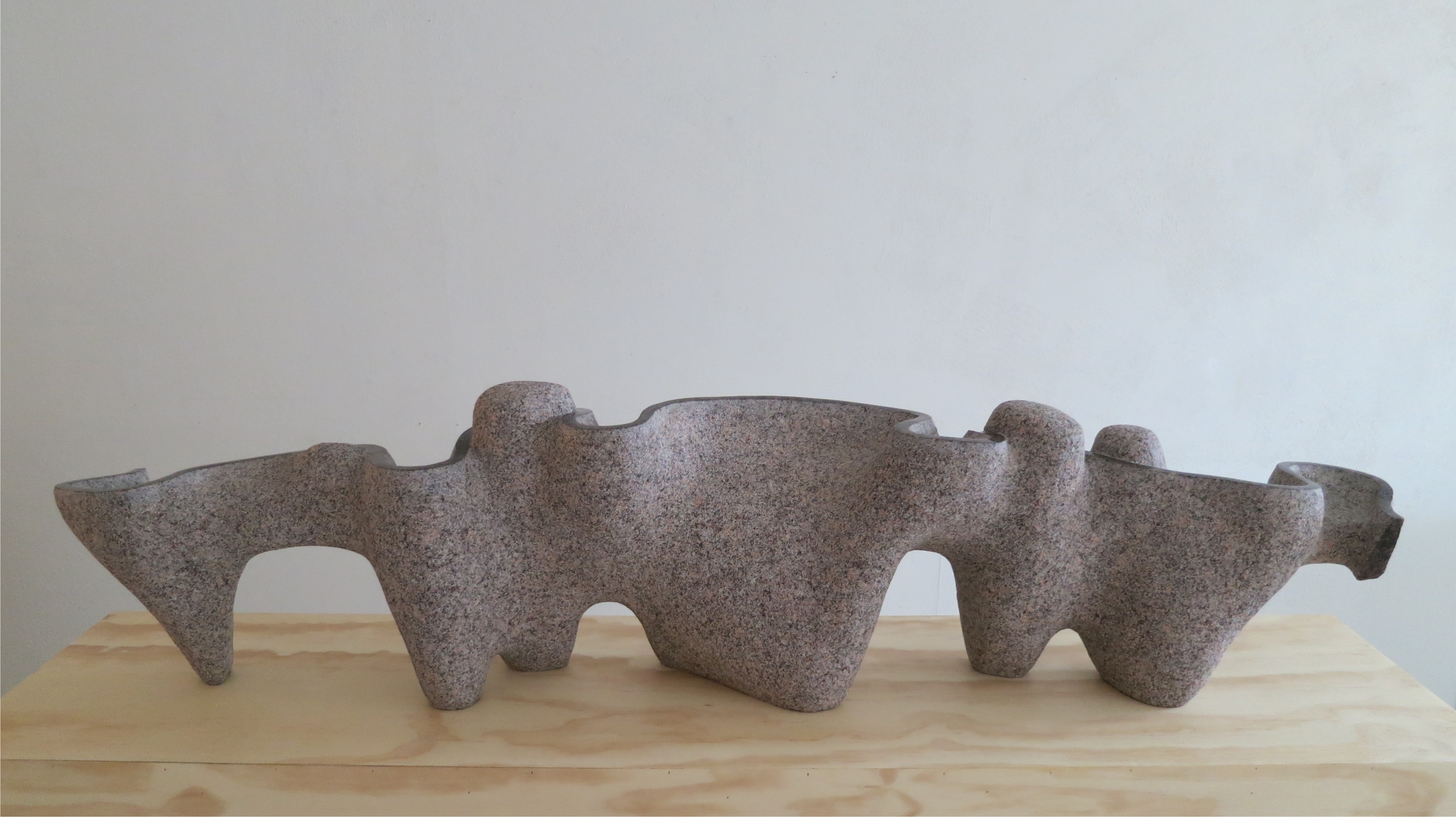 How did you become involved with stone carving and with NWSSA?
How did you become involved with stone carving and with NWSSA?I made my first stone carvings from limestone and serpentine in sculpture classes I took while working as an architect in the 1980’s. I didn’t return to stone until I began teaching at Evergreen. About ten years ago I planned a program called Written in Stone that I taught with a poet. Our students read and wrote poetry extensively. They collected stones, cast them in plaster, sandblasted words onto them, knapped obsidian and old porcelain toilets (the preferred practice material!), and carved small works in Pyrophyllite. I met Evergreen biology professor Larry Eickstaedt at that time. “You need to check out NWSSA!” he told me, “and you need to meet Verena Schwippert!” That was the start of my connection with NWSSA, and my friendships with Verena and many other members. I attended my first Camp B Symposium the summer before I taught Written in Stone, and got a refresher course in stone carving basics. Since that Symposium, I’ve been back for many more. NWSSA has provided me with a community of like-minded and supportive friends, along with opportunities to work, share, and learn, and new directions and horizons for my work.
How would you describe your art, your stone carving in particular?
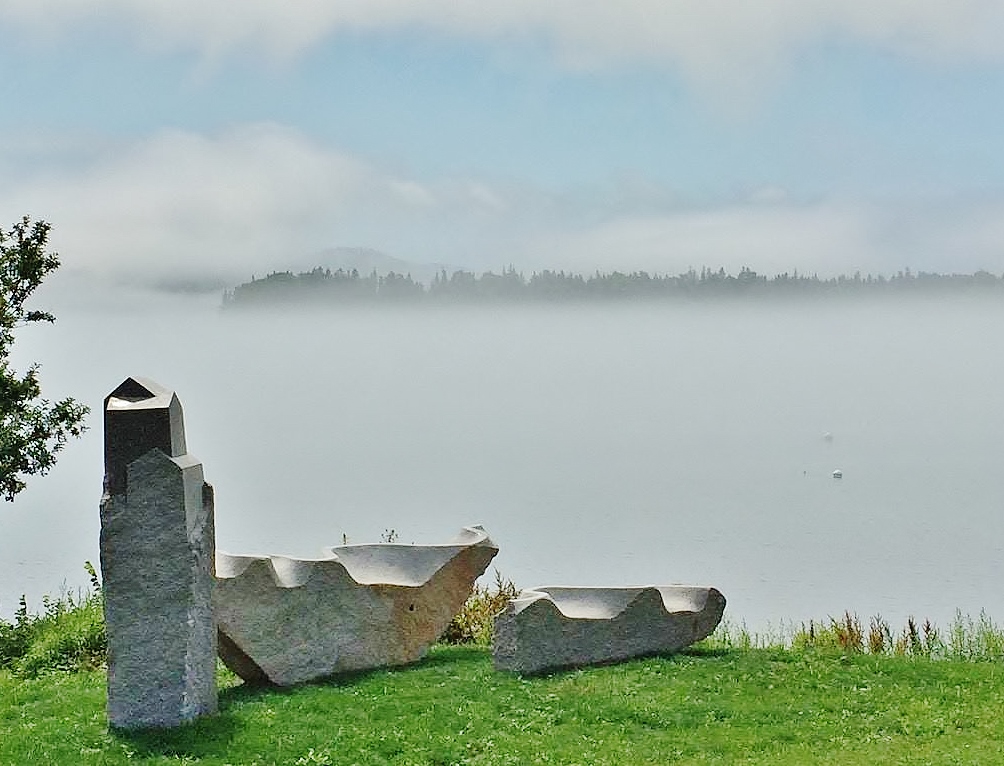
Carving, in wood or stone, holds a special spot in my heart. I think it has to do with the slowness, the intimacy with the material, and the revelatory quality of the process. When I came back to stone after a long hiatus, I began with figurative pieces. In a way, the body is always the referent in my work, whether I depict it directly, or relate to its scale or sensory dimensions.
There are different themes, or preoccupations, that I return to in my work. I’ve used the t-shaped form of the upper torso for many years. The chest is the locus of the heart, the lungs, and the breath. I like the idea, from classical Indian art, of sculptural form filled, informed, by breath. I use simplified house forms, to suggest solitudes, and when I group them, to say something about isolation, even in community. Houses can refer to families and their separateness, as well. I make horizontal pieces with landscape and meandering path forms. They arise out of the particular stone I’m working with and the physical act of making lines. They can also refer to Chinese landscape painting, where a journey might be depicted or implied, as a metaphor for life and time passing. Rather than unrolling, my pieces can be explored and traced with the hand. Some have inverted landscape forms, like mountains reflected in water in Chinese works.
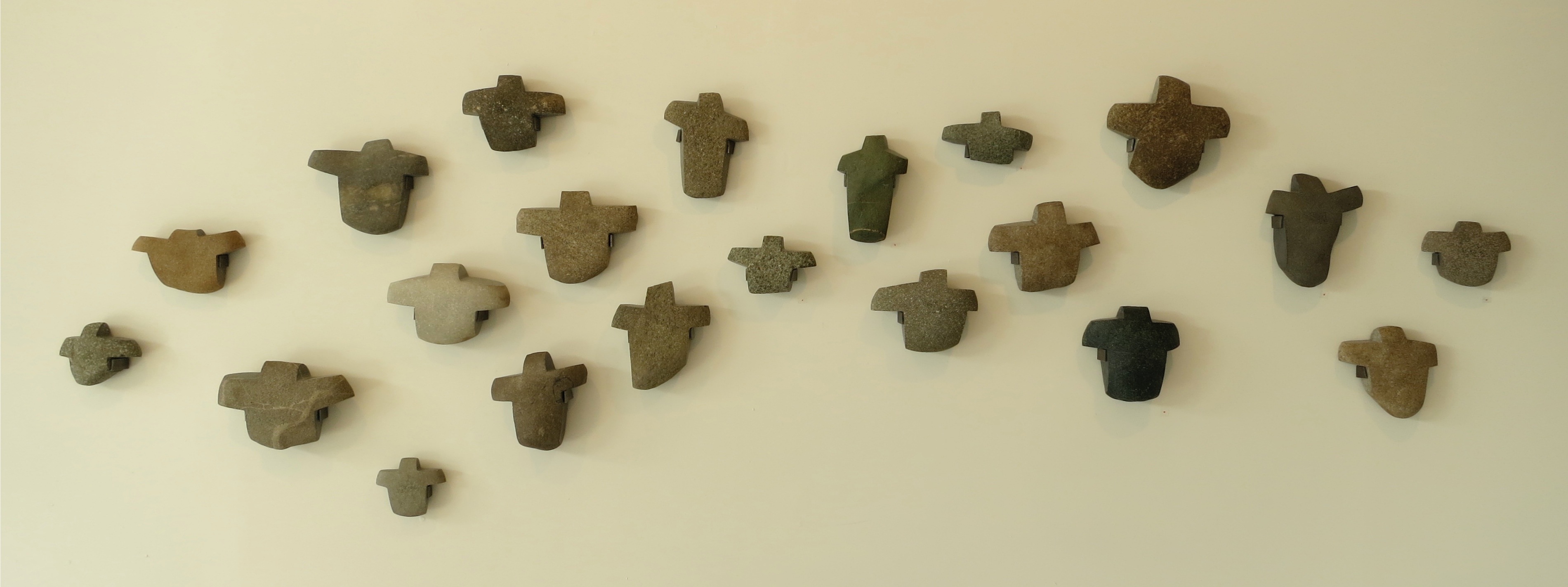 Tell us a bit about how you work – your process, your work space, your tools.
Tell us a bit about how you work – your process, your work space, your tools.Drawing is fundamental, but I find that with stone, the drawing is often more exploratory and less prescriptive; that is, I don’t make a drawing and then try to reproduce it in stone. The particular stone has too much to say as I’m working with it. It makes for a more dynamic and tense process in some ways. As with drawing, each mark – each cut – has to be related to all the ones already made until I find a resolution of all of them. I tend to have more than one piece underway at a time and to work back and forth between them.
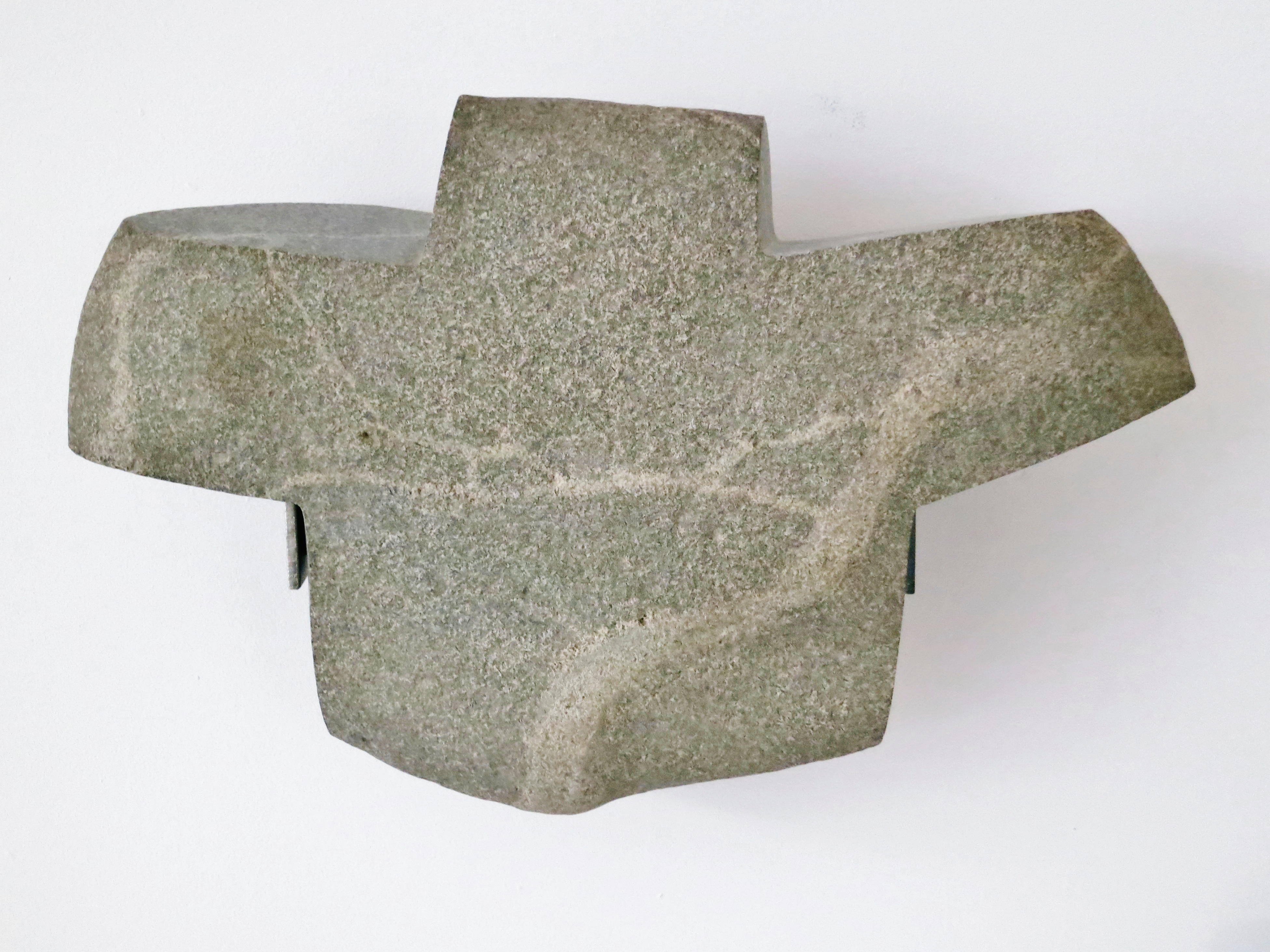 I like working with granite – it’s plentiful and I like the way it moves and how it finishes. I like the softness of bush-hammered surfaces, and the crispness that can be attained at polished edges and plane breaks. I like working with hard river stones from the Cascades, too. They have a delightful fullness of form and wonderful surfaces – easy to carve away if you’re not careful. I work outside, under a 10’ X 20’ tent, or next to it on a gravel drive, and I store my tools in a lockable trailer close by. The tools I rely on are my carbide chisels and a couple favorite hammers, 4 ½” and 7” angle grinders and diamond blades, diamond cup wheels, an air hammer and bushing chisels, and water polisher.
I like working with granite – it’s plentiful and I like the way it moves and how it finishes. I like the softness of bush-hammered surfaces, and the crispness that can be attained at polished edges and plane breaks. I like working with hard river stones from the Cascades, too. They have a delightful fullness of form and wonderful surfaces – easy to carve away if you’re not careful. I work outside, under a 10’ X 20’ tent, or next to it on a gravel drive, and I store my tools in a lockable trailer close by. The tools I rely on are my carbide chisels and a couple favorite hammers, 4 ½” and 7” angle grinders and diamond blades, diamond cup wheels, an air hammer and bushing chisels, and water polisher.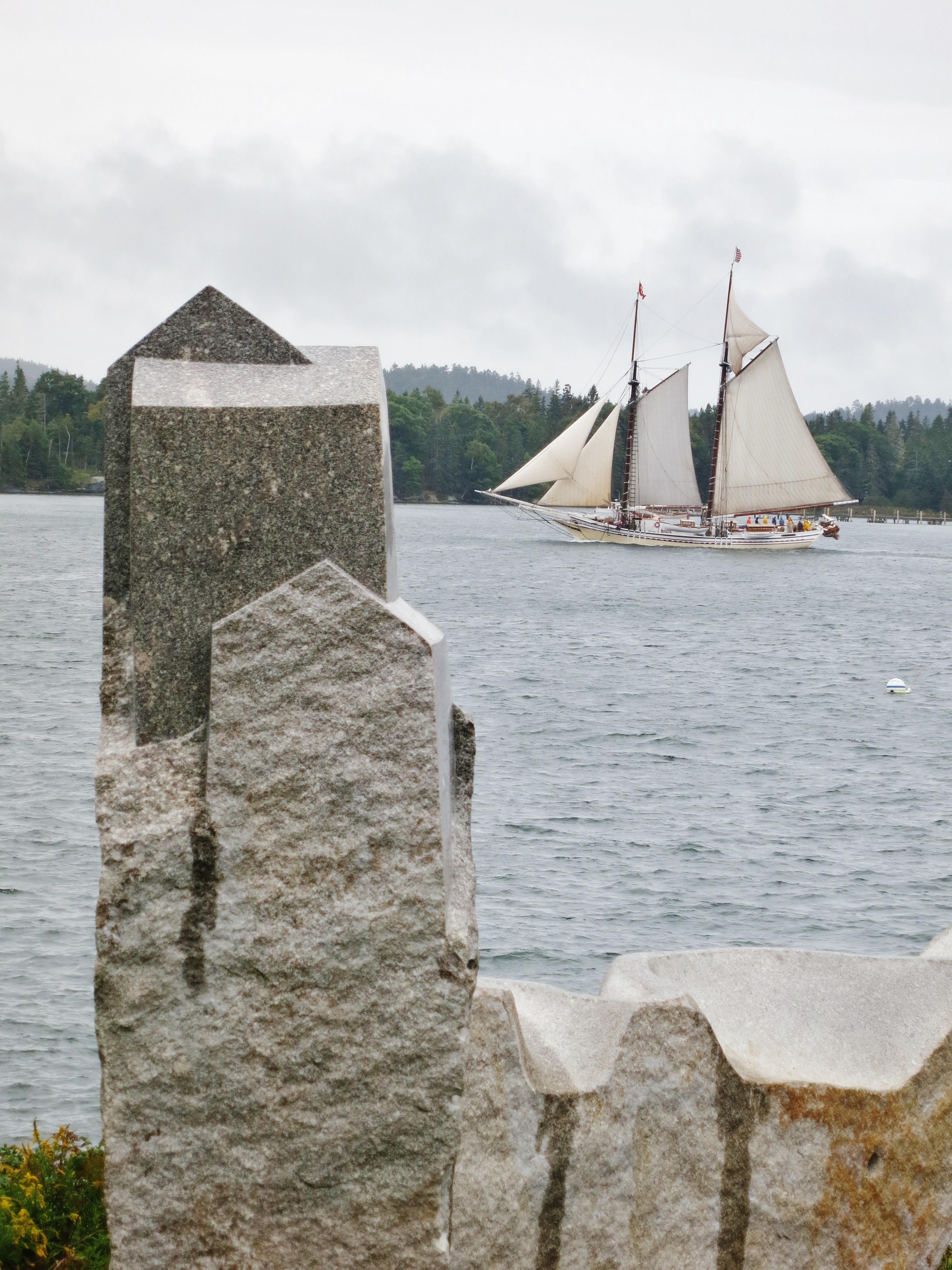 Have you been influenced by any particular artists?
Have you been influenced by any particular artists?Inspired might be a better word. I think we all learn by copying, until we realize we’re not the person we’re copying, and our real work is something different from theirs, something we have to figure out. So many artists and architects and designers have inspired me, and continue to, for their work, and now as much for their persistence and rigor – what keeps them making what they make, and doing it so well. “Work comes from work,” Richard Serra says.
Describe a recent piece or two.
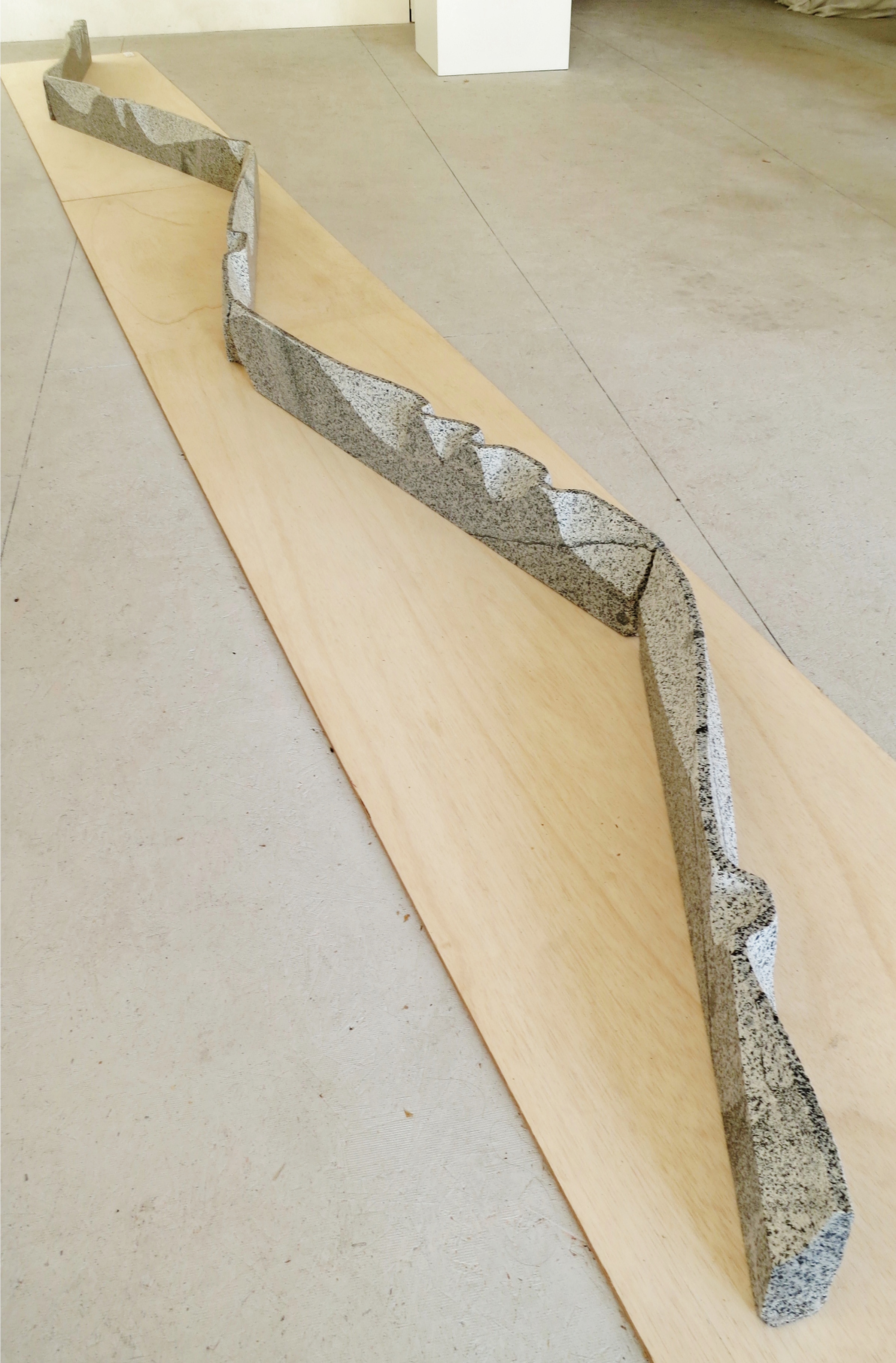
My long, low floor pieces, like Meander, and Between You and Me, marked a transition in my work from singular forms to multi-part works that engage the space around them and compel the viewer to move to experience the piece. They lead to the piece I made for the town of Castine, Maine the summer before last, as one of the artists invited to take part in the 2014 Schoodic International Sculpture Symposium (schoodicsculpture.org). The three-part piece, called Home and Away, is the largest stone work I’ve made to date, carved from nearly ten tons of local lavender gray granite. The abstracted house forms of the tallest element refer to the white clapboard houses on the hillsides of the town and its long polished meanders are oriented out to Penobscot Bay and the Atlantic beyond. The piece invites people to engage the work, follow the meanders with their hands, and sit on the stones to watch boat traffic. I think people were skeptical at first, but they’ve really taken the piece to heart, and it’s become a something of a local landmark. They invited me to return last July for a big dedication celebration. I was really proud and happy to be there!
 What are you looking forward to, in terms of sculpture and stone?
What are you looking forward to, in terms of sculpture and stone?I’m really interested in making more works that use multiple elements to create spatial and tactile experiences for people, as well as visual ones. This is not a new idea by any means, but it is a different way of thinking about sculpture for many, so I spoke about it as one of the field artists at Camp B last summer, where I roughed out a four-element piece on the field. It’s back home, where I’m working to finish it up. Having larger works in my portfolio has helped me to get my first public sculpture commission in Washington State, to make a work for the grounds of Vashon Island High School. I’m just beginning the project; it’s slated for completion later in 2017. It’s exciting – and a little daunting! But I figure I’ll have lots of expertise and insight to draw on in NWSSA. Looking ahead, too, I’d really like to help bring some of the sculptors from the Schoodic Symposium to Camp B. They were inspiring and great resources!
What’s your biggest challenge in making sculpture?
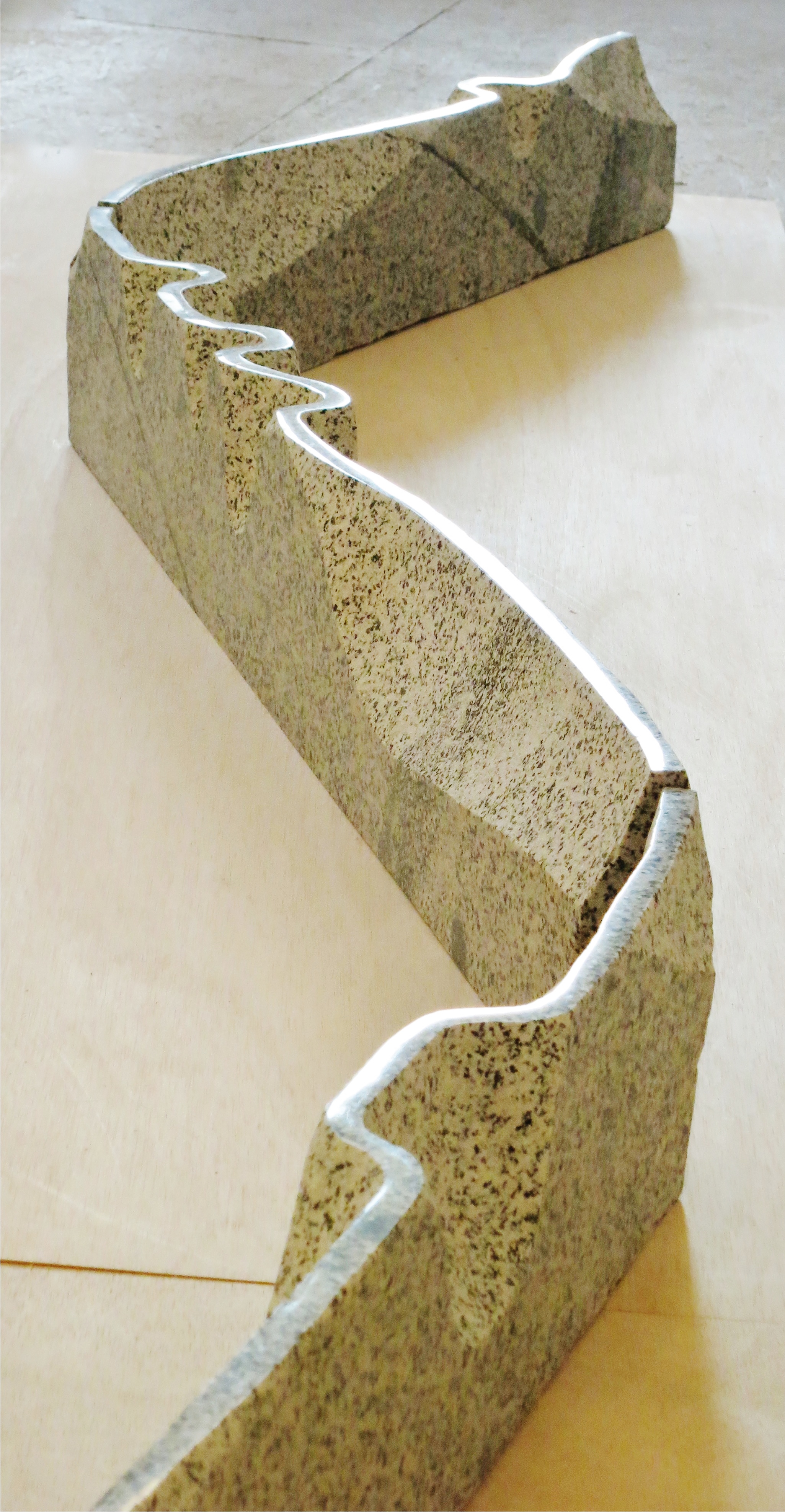
Time! Friends are making retirement plans to kick back, while I’m trying to clear the decks to make more work and take on bigger rocks! I’ve always believed that it’s a privilege to be a maker of things, so I plan to seize the opportunities that come to keep drawing, designing, and sculpting. “Stone is an old man’s material,” Noguchi said somewhere. If he’s right, I guess my timing is good.
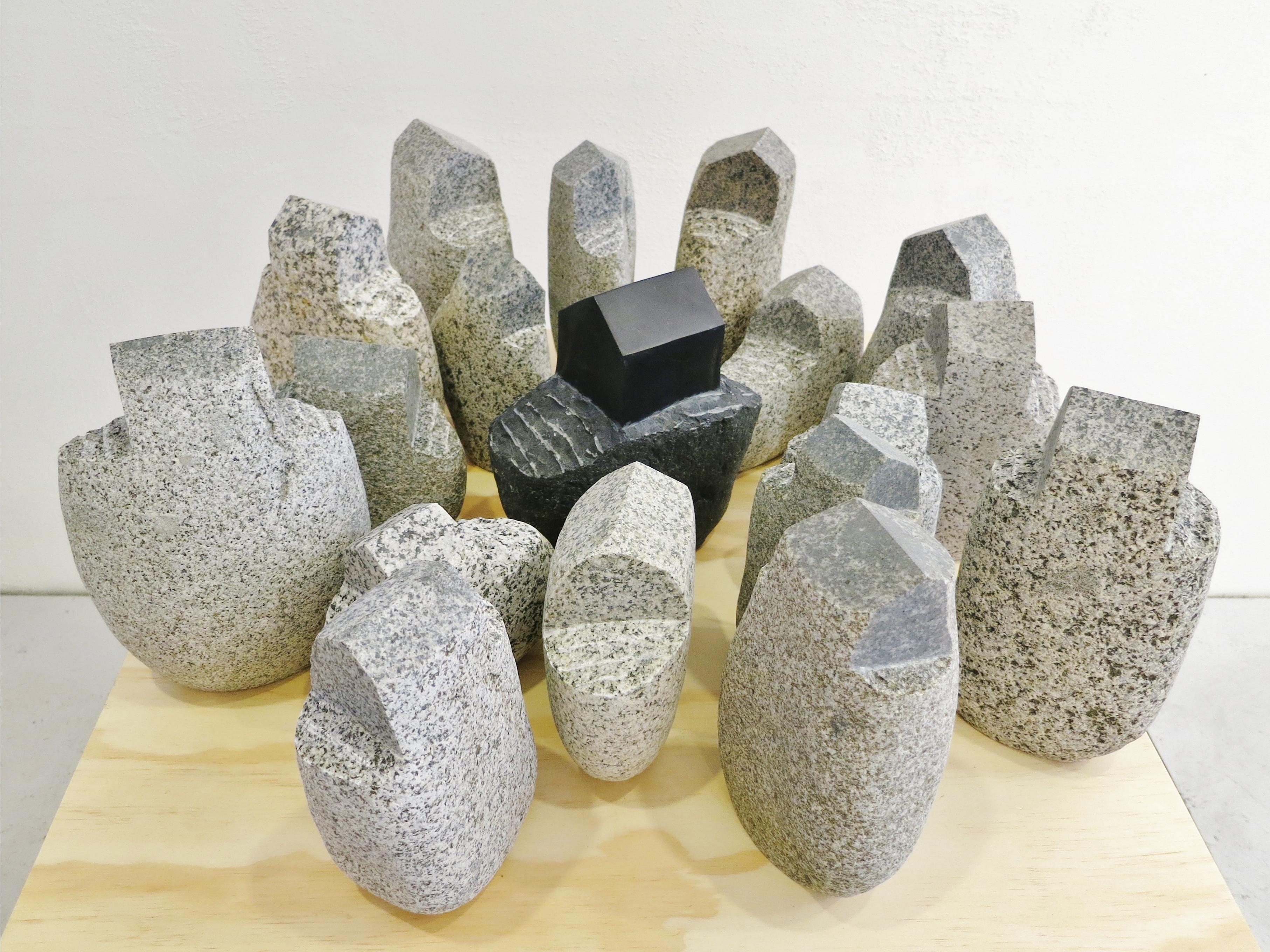 Any last words?
Any last words?How about Michelangelo’s words? “It is well with me only when I have a chisel in my hand!”
That pretty well sums it up!
